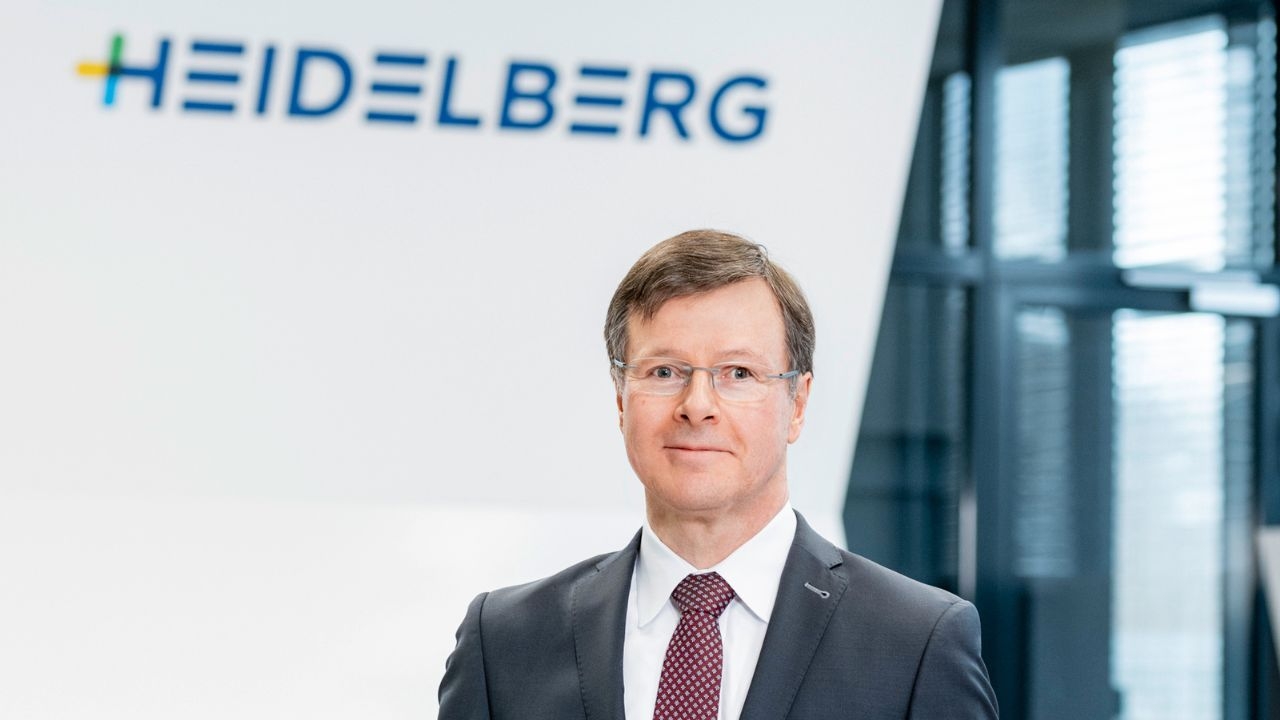Heidelberg focuses on Gallus’ digital future
Heidelberg’s new CEO Dr Ludwin Monz sees the total cost of ownership as key to the success of Gallus inkjet technology. Andy Thomas-Emans reports

Heidelberg focuses on Gallus’ digital future
When Heidelberg fully acquired Gallus, analysts predicted a wide range of potential synergies. Both companies were major players in the labels market; they both had a strong heritage in offset printing; and Gallus could call on Heidelberg’s global distribution and support network.
The real-world situation proved to be rather more complex.
Although it is true that Heidelberg is deeply involved in the labels segment, this is on the sheetfed wet glue and in-mold label side of the business where print shops are highly industrialized and consolidated. Narrow web labels, by contrast, remain a segment where printing and converting is still widely regarded as an art, with low levels of automation and a high degree of fragmentation.
This was one of the key learnings of the early integration period between Gallus and Heidelberg – that these two markets are quite distinct, with their own technology and operating requirements. It took a little time to realize that the real synergy was not common customers, but a common technology – digital.
There had been some limited cooperation in offset technology with Gallus’ RCS development teams but offset remains a small (though important) part of Gallus’ overall market. Digital, however, was quickly seen as a central priority both by Gallus CEO Dario Urbinati and Heidelberg’s new CEO Dr Ludwin Monz.
And for Monz, the joint development of UV inkjet technology with Gallus has greatly increased the importance of the overall label market to Heidelberg.
‘Heidelberg customers in this market are often highly industrialized print shops with optimized processes. They particularly count on the high productivity of our products,’ explains Monz. ‘While we don’t share details for the specific market breakdown, we can confirm that the combined label market - and especially when it comes to digital- is an important growth sector for Heidelberg, representing double-digit growth of print production value over the next three years.
‘This is why retaining Gallus was a strategically important decision for the business, with its impact being felt in a number of positive ways. Not least of all in the many exciting joint R&D projects underway with some interesting innovations. Dario and his team have been a great addition to Heidelberg, complementing our business and adding a new dynamic.’
Monz confirms that Gallus is now ‘a key component of the Heidelberg packaging strategy,’ complementing the wider portfolio by adding narrow web labels and packaging up to print widths of 570 mm. ‘More of our sheetfed customers are multi-site companies who use all technologies including pressure sensitive. For the smaller print shops, we have the Gallus product lines, either digital, offset or flexo. These fit perfectly to that segment.’
Gallus One
The Gallus One digital press is the first true joint development between Heidelberg and Gallus and was designed ‘to remove the Total Cost of Ownership (TCO) barrier for the adoption of reel-to-reel digital labels,’ according to Monz. ‘Gallus in moving its business from a “product price”-based sales model to a TCO calculation designed to better serve customers, increase transparency to the ‘real costs’ of a product purchase and deliver increased customer value. ‘Heidelberg will benefit from the increased capacity requirements in this market. Our self-developed ink also offers attractive potential for recurring revenue in a growing market.’ Automation and connectivity are other important areas for joint development, moving technologies already common in the sheetfed market to the narrow web market.
‘We need to compensate for a lack of labor across the industry – not just skilled labor but all labor,’ says Monz. ‘At Heidelberg, we have pursued automation in sheetfed offset with our Push to Stop technology, our biggest advance over the last 10 years. That is what I would like to see with narrow web label printing. Today it is more a kind of artwork, with many parameters controlled manually and we have to improve that.
‘In our sheetfed label business Prinect is all about automation of workflow, and connectivity is a priority. Machine monitoring to the Cloud for narrow web is something for the future, but online monitoring we can do today and this definitely helps customers with OEE. There are manifold possibilities for future development.’
Monz emphasizes the continued importance of Gallus’ conventional flexo and offset print technologies and the drive to further automate both processes. ‘I am deeply impressed with the print quality of flexo printing. It has become closer to offset and I would like to see that advanced. ‘However, there is undeniable growth for technologies such as Gallus One and our hybrid press the Gallus Labelfire. And the Labelfire is a key product for many reasons - it’s so modular that it can accommodate almost any customer requirement. What’s more, it’s the ideal bridge between conventional and digital, and for many, the first “comfortable” step into digital labels.’
Monz firmly believes digital labels will become more mainstream. ‘With the Gallus One solving the TCO issue, digital labels will finally move beyond short runs. Digital automation and connectivity will support labor shortages by including new technologies including artificial intelligence.’ Digital printing will also support the requirements of a new generation of consumers for a different approach to packaging requiring smart connectivity – ‘a physical experience combined with a digital interface.’
Looking at future digital trends, Monz expects low-migration digital inks to grow in importance. ‘As digital labels continue to grow, we expect low migration inks specifically for cosmetics and food, and UV ink for standard labels, to represent significant and immediate growth for us and the wider industry. Automating the workflow and reducing our dependency on a physical workforce is also an important part of our thoughts.’ Monz points out that the inkjet technology used by Gallus is both modular and scalable.
‘As a result, when combined with the expertise of the Heidelberg and Gallus R&D teams, it can be utilized for other applications and markets.’ A key trend identified by Monz is the continued consolidation of the narrow web print industry, and this will impact the label industry’s economics. ‘That supports our view that the future will be all about production cost and flexibility.’
Stay up to date
Subscribe to the free Label News newsletter and receive the latest content every week. We'll never share your email address.


